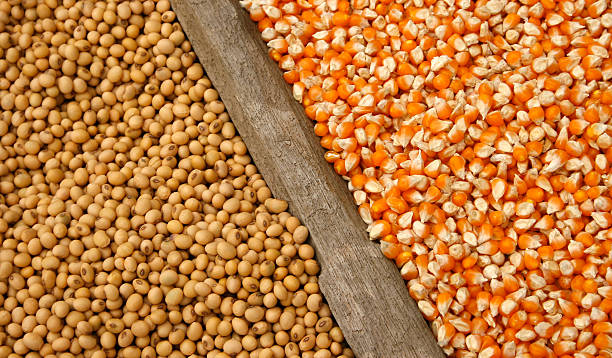A key factor in the development of a new crop price forecast is how many acres farmers plant of each crop. USDA surveys farmers each year and reports early season acreage intentions in the Prospective Plantings report, released at the end of March. Then at the end of June, the Acreage report from USDA details the area of each major crop planted. Since 2006, U.S. farmers have planted about 244 million acres to corn, soybeans, wheat, cotton, sorghum, and rice. Corn and soybeans account for the largest crop areas planted, reaching 181 million acres combined in 2021 (Figure 1).
Figure 1. U.S. Planted Acres

From an economic standpoint, relative crop profitability is an important driver of planting decisions. One indicator of that profitability is the relative price of one 3.11commodity to another.[1] Given the large area impacted and the typical rotation between these two crops, the soybean-to-corn price ratio is widely watched as providing insight into what farmers ultimately plant each spring.
An aspect of how the price relationship between soybeans and corn impacts planting decisions can be seen in the relationship of the soybean-to-corn price ratio and the number of corn acres planted in excess of soybeans each year. In general, when the price ratio of Risk Management Agency (RMA) soybean-to-corn projected prices, calculated each February[2] is relatively low, corn acres increase at the expense of soybeans. At high ratios, soybean acres increase relative to corn (Figure 2).
Figure 2. Corn Acres Minus Soybean Acres and RMA’s Soybean-to-Corn Projected Price Ratio

The average price ratio from 2006 to 2022 is 2.36 and the average number of corn acres over soybean acres is 10 million. At the extreme, in 2007 the soybean-to-corn projected price ratio was 1.99 and farmers planted 93.5 million acres of corn and 64.7 million acres of soybeans, a difference of 28.8 million acres (Figure 2). When the price ratio has been at its highest, 2.57 to 2.59, we have seen plantings of corn and soybeans about equal (2017 and 2018). But the price ratio at this level is also associated with 6 million more acres of corn than soybeans in 2021. Corn acres relative to soybean acres were much smaller than expected in 2022, a difference of only 1.1 million acres despite a price ratio of 2.43. It is likely that risks associated with high fertilizer prices and product availability had an impact on farmers’ planting decisions last year given higher fertilizer requirements for corn compared to soybeans.
The RMA soybean to corn base price ratio for 2023 is 2.33 ($13.76 soybeans, $5.91 corn). If the total planted area remains constant, that suggests an increase in corn acres and a decrease in soybean acres in 2023 compared to 2022. In other years when the price ratio rounded to 2.3 (2010, 2013, 2015, and 2016), the range of corn acres over soybeans were 5.3 million to 15.6 million. If corn and soybean acres again total about 180 million, the low estimate of corn acres for 2023 would be 92.7 million acres and the high estimate of soybean acres 87.4 million acres.
Of course, other factors besides relative prices matter when farmers make their planting decisions. Among these are crop rotations that boost productivity and input efficiency, input costs, and of course, weather. And in the South, cotton is a major non-grain competing crop enterprise whose price and profitability are not part of this analysis. But, the price ratio between major crops may provide a key piece of information in forming expectations of what upcoming acreage reports may reveal.
[1] For more on relative price relationships between commodities, see Rabinowitz, Adam. “The Peanut-Cotton Price Relationship.” Southern Ag Today 3(2.1). January 9, 2023.
[2] RMA Price Discovery, base prices for 2023, conventional practices with a March 15 sales closing date, RMA Price Discovery – Home (usda.gov).
Welch, Mark. “The Soybean to Corn Price Ratio as a Guide to Farmers’ Planting Decisions.” Southern Ag Today 3(11.1). March 13, 2023. Permalink

